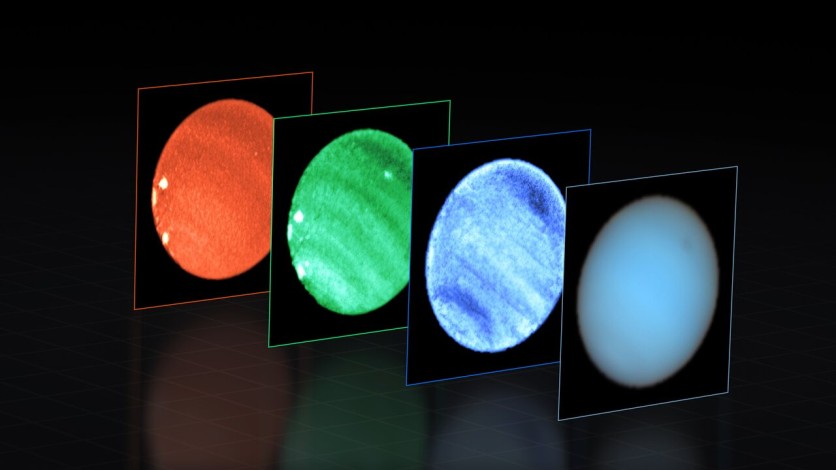Astronomers using the European Southern Observatory's Very Large Telescope (VLT) have made a significant breakthrough by detecting a sizable dark vortex within Neptune's atmosphere. Intriguingly, an unexpected smaller bright spot was found adjacent to the dark vortex.
It marks the first-ever instance of observing a dark spot on Neptune using an Earth-based telescope. These enigmatic features in Neptune's blue-hued atmosphere have puzzled astronomers for years, and the recent findings are shedding light on their origin and nature.

Short-Lived, Elusive Dark Spots on Neptune
Giant planets frequently exhibit prominent spots in their atmospheres, with Jupiter's iconic Great Red Spot being the most famous example. A dark spot on Neptune was initially identified by NASA's Voyager 2 spacecraft in 1989, although it vanished a few years later.
"Since the first discovery of a dark spot, I've always wondered what these short-lived and elusive dark features are," said Patrick Irwin, the study's lead investigator and a professor at the University of Oxford in the UK.
To decipher the nature of these spots, Irwin's team turned to data from the VLT and used the Multi Unit Spectroscopic Explorer (MUSE) instrument. It enabled them to split the reflected sunlight from Neptune and its dark spot into various wavelengths, generating a 3D spectrum.
This approach allowed for a detailed study of the spot, revealing its depth within Neptune's atmosphere and shedding light on its chemical composition.
The findings challenged previous notions about the spots. The observations indicated that the dark spots are likely formed due to air particles darkening in a layer beneath the main visible haze layer.
The mixing of ice and hazes in Neptune's atmosphere plays a crucial role in this process. This insight was achieved by studying the dark spot and a previously unidentified bright cloud type adjacent to it.
'Deep Bright Cloud'
The surprise discovery of this new "deep bright cloud" presented a unique aspect of the study. Unlike previously observed small high-altitude methane ice clouds, this new cloud type was found to be at the same atmospheric level as the main dark spot.
The VLT data revealed its proximity to the dark vortex and its distinct nature. ESO notes that detailed observations from Earth had been impossible before this study due to the fleeting nature of these features.
The breakthrough came when NASA's Hubble Space Telescope spotted several dark spots, and one of which was detected in Neptune's northern hemisphere in 2018.
Irwin and his team seized this opportunity to study the dark spot using the VLT's advanced capabilities, marking a significant leap in observational capability.
"This is an astounding increase in humanity's ability to observe the cosmos. At first, we could only detect these spots by sending a spacecraft there, like Voyager," commented study co-author Michael Wong, a researcher at the University of California, Berkeley.
"Then we gained the ability to make them out remotely with Hubble. Finally, technology has advanced to enable this from the ground," Wong added.

ⓒ 2025 TECHTIMES.com All rights reserved. Do not reproduce without permission.




